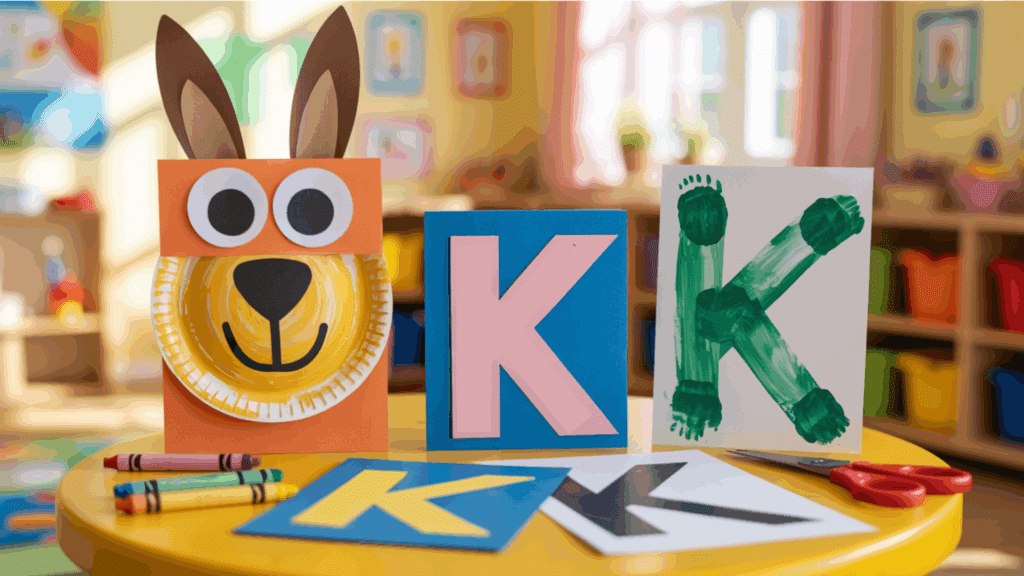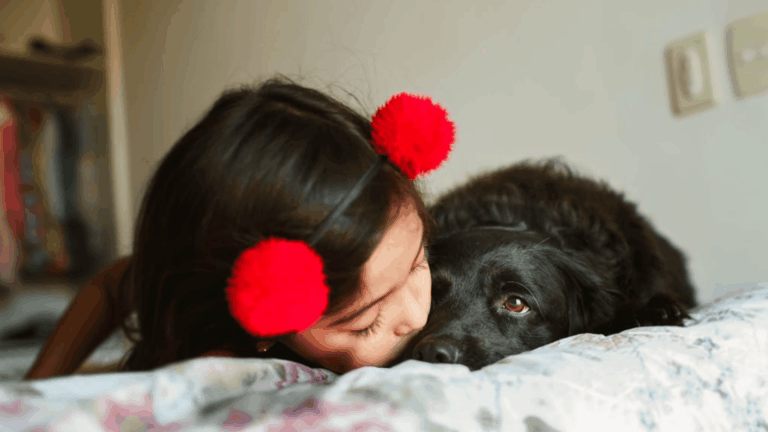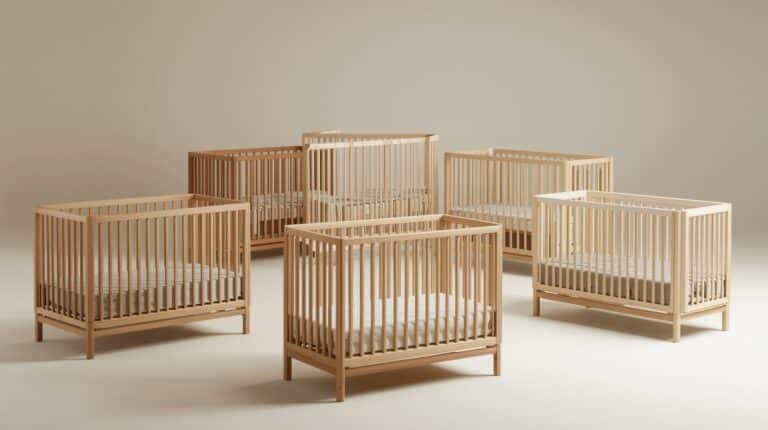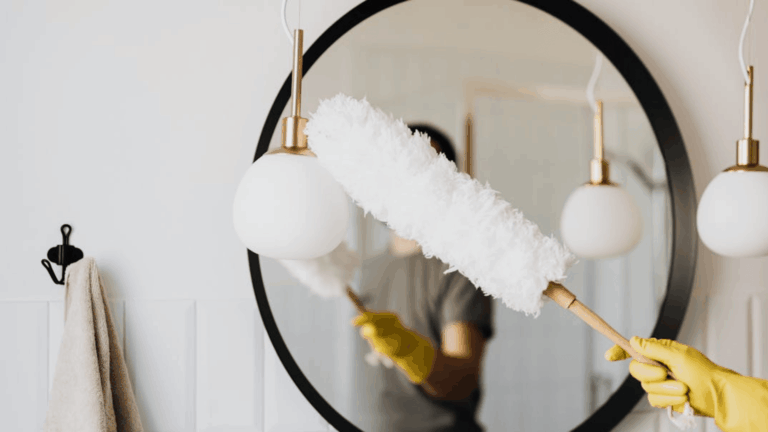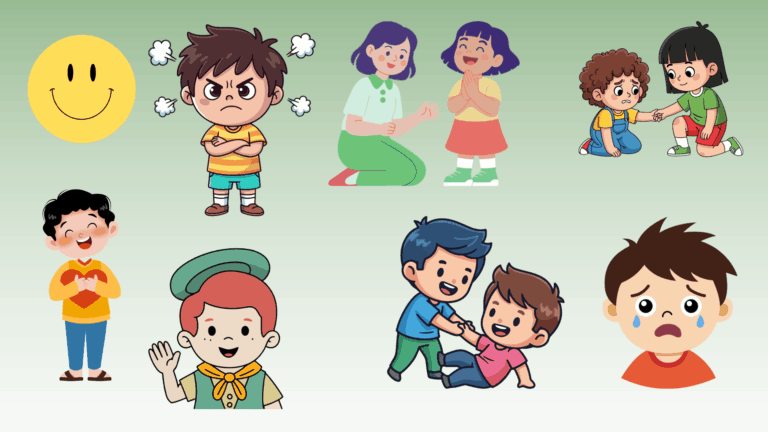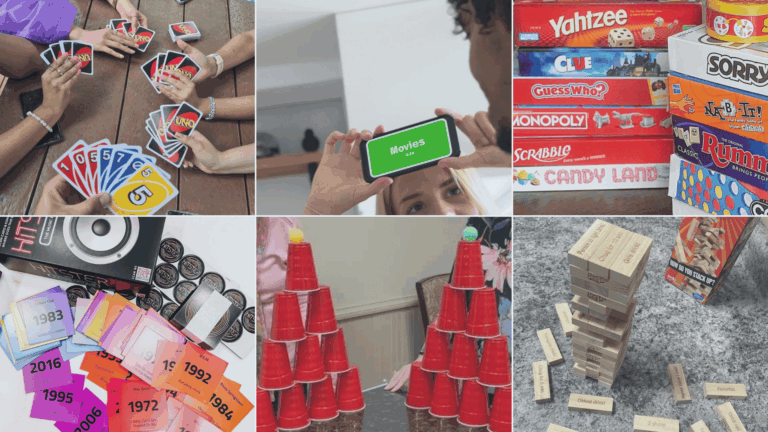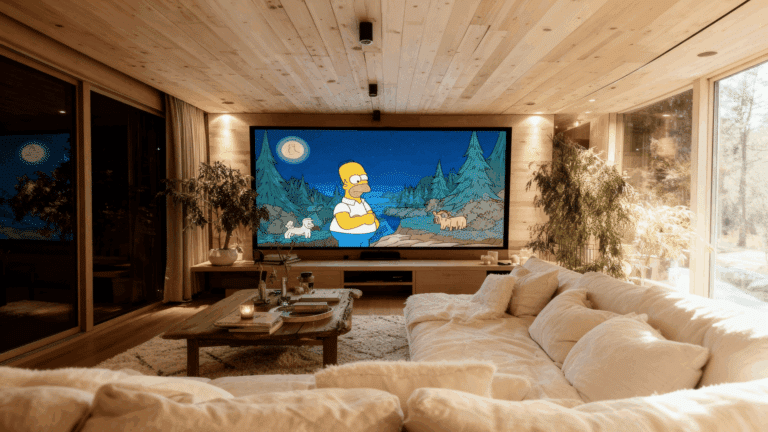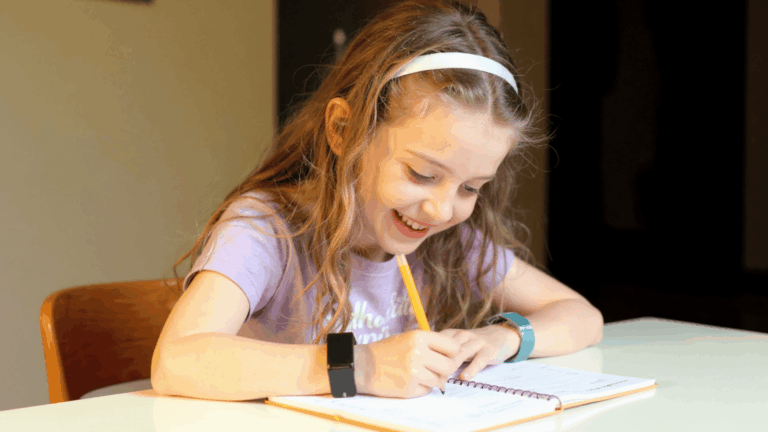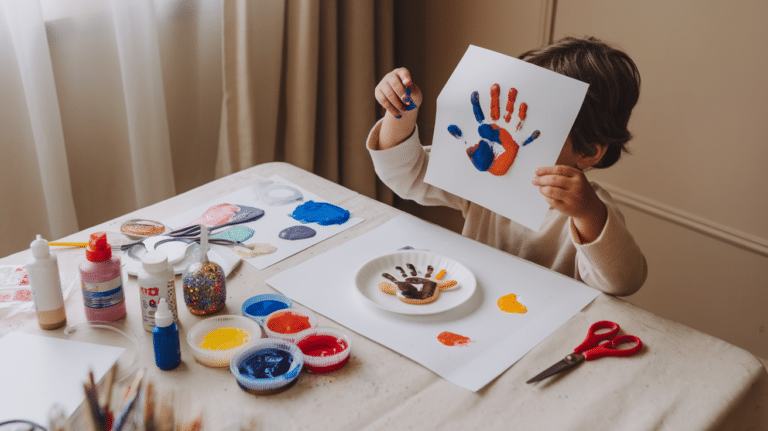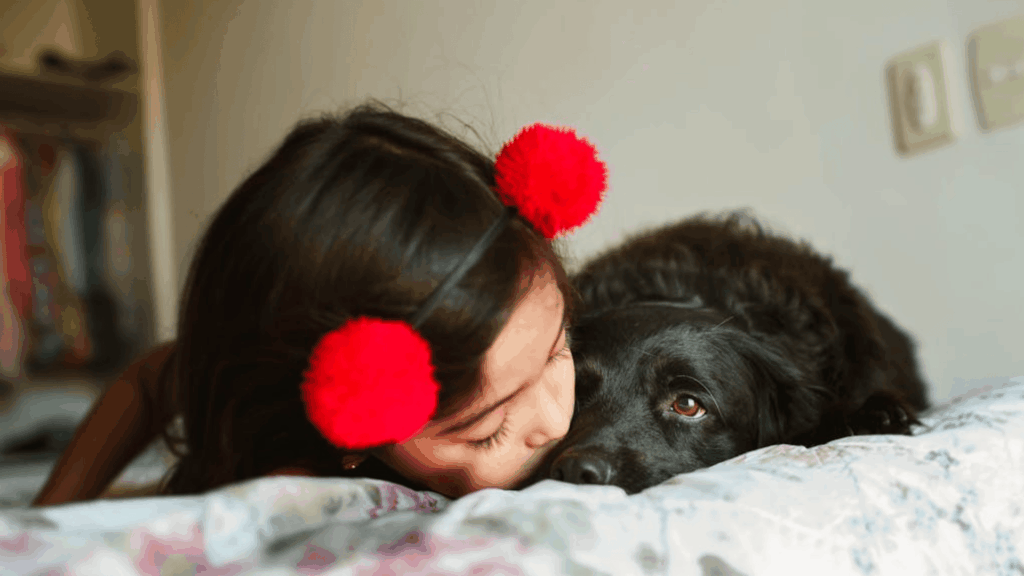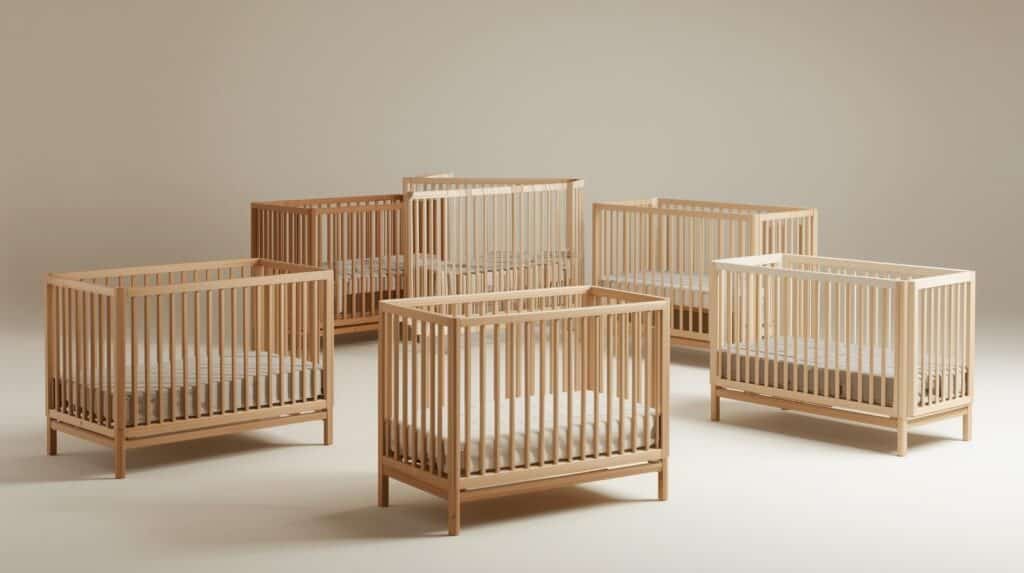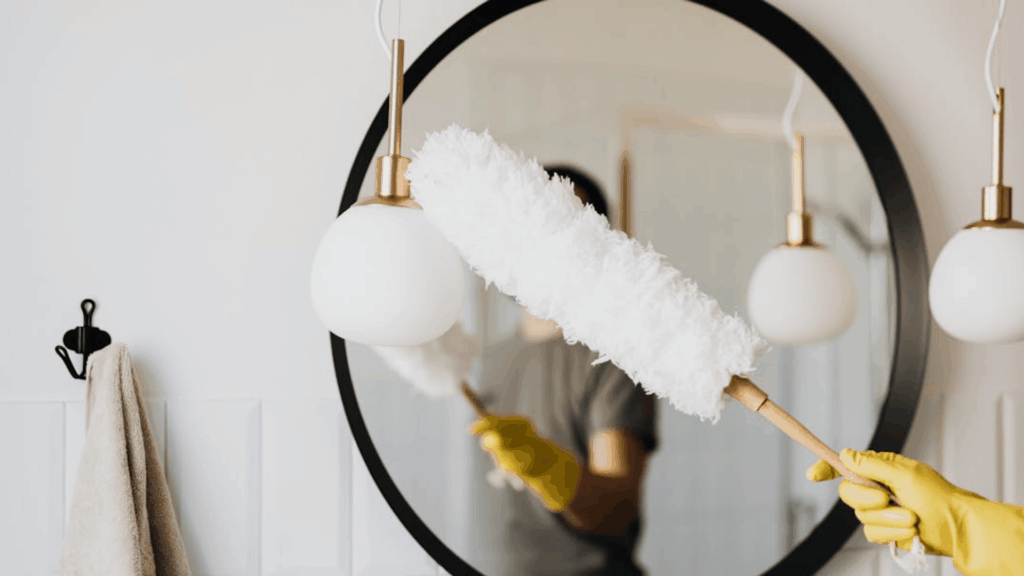Are you looking for fun ways to help your little ones learn the letter K?
Kids love getting their hands messy with glue, paint, and paper. These letter K crafts are simple enough for preschoolers, but still lots of fun.
From koalas to kites and kings to kangaroos, these projects bring the letter K to life in colorful ways. They’re great for rainy days, homeschool activities, or just because!
Let’s jump into these easy letter K crafts for preschoolers that your children will love trying!
Creative Letter K Crafts for Preschoolers
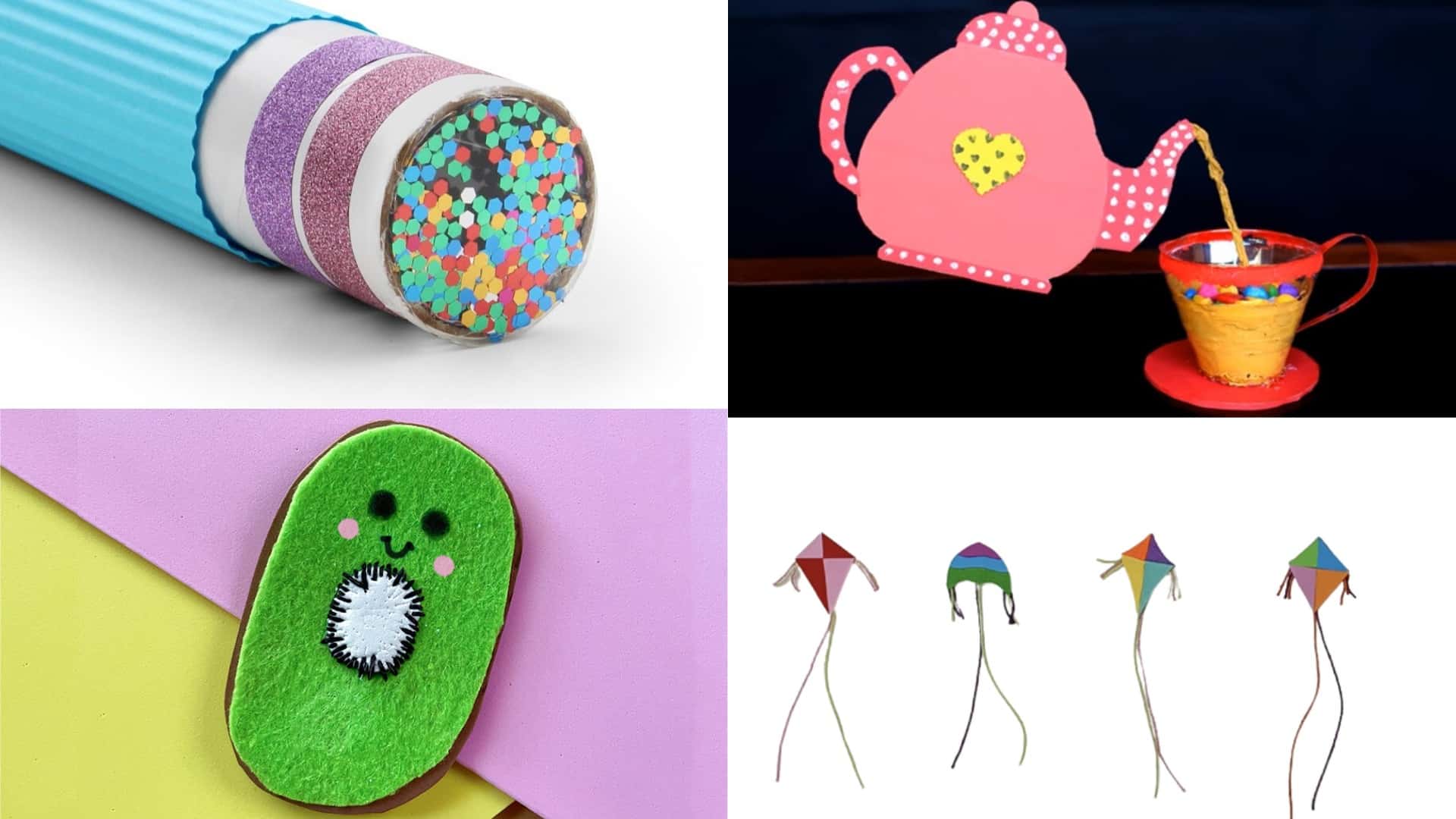
1. Kaleidoscope Craft
This DIY kaleidoscope introduces children to the fascinating world of light reflection and symmetry.
- Materials Needed: Paper towel tube, aluminum foil, colorful beads, clear plastic sheet, tape.
- How to Make: Line the inside of the tube with aluminum foil, add a few beads, and cover the ends with the plastic sheet.
- Skills Developed: Understanding of light reflection, symmetry, and pattern recognition.
2. Kettle Craft
This project not only recycles materials but also sparks creativity as children design and decorate their own miniature kettle craft.
- Materials Needed: Plastic bottle, aluminum foil, glue, scissors, paint.
- How to Make: Cut the bottle to shape, cover with foil, and decorate as desired.
- Skills Developed: Recycling, creativity, and fine motor skills.
3. Kangaroo Joey Peekaboo Craft
This activity is perfect for teaching about Australian wildlife, enhancing knowledge of animals and their habitats.
- Materials Needed: Paper cups, colored paper, glue, scissors, and markers.
- How to Make: Decorate the cups, attach the joey inside the mother’s pouch, and add facial features.
- Skills Developed: Fine motor skills, understanding of animal families, and creativity.
4. Paper Glider Craft
Design and build a simple kite using paper, sticks, and string. Once assembled, take it outside to experience the joy of flying your creation.
- Materials Needed: Paper, sticks (or straws), string, glue, markers.
- How to Make: Assemble the frame, attach the paper, decorate, and add the string.
- Skills Developed: Understanding of wind and flight, hand-eye coordination, and design skills.
5. Killer Whale Paper Bag Puppet Craft
Create a killer whale puppet using a paper bag and printable templates. This craft encourages imaginative play and storytelling, allowing children to explore marine life in a fun and interactive way.
- Materials Needed: Paper bag, black and white paper, glue, scissors, markers.
- How to Make: Cut and glue the paper to form the whale’s features on the bag.
- Skills Developed: Imaginative play, understanding marine life, and fine motor skills.
6. Koala Hug Bookmark Craft
Make a cute koala bookmark using paper and basic craft supplies. This project is a delightful way to encourage reading among young children, combining functionality with creativity.
- Materials Needed: Colored paper, glue, scissors, and markers.
- How to Make: Cut and assemble the koala shape, then attach it to a strip of paper.
- Skills Developed: Reading encouragement, creativity, and fine motor skills.
7. Symmetry Splash Craft
Use watercolor paints and paper plates to create kaleidoscope-inspired art. This activity combines creativity with an introduction to color patterns, enhancing artistic skills and understanding of symmetry.
- Materials Needed: Paper plates, watercolor paints, brushes, markers.
- How to Make: Fold the paper, paint on one side, and press to create symmetrical patterns.
- Skills Developed: Understanding symmetry, artistic expression, and patience.
8. Kangaroo Mask Craft
Design a kangaroo mask using printable templates and coloring materials. This craft is ideal for role-playing and learning about marsupials, fostering creativity and cultural awareness.
- Materials Needed: Cardstock, scissors, glue, elastic band, markers.
- How to Make: Cut out the mask shape, decorate, and attach the elastic band.
- Skills Developed: Role-playing, understanding animal features, and creativity.
9. Kite Shape Craft
Cut out kite shapes from colored paper and decorate them with markers, stickers, or glitter. This simple craft is great for fine motor skills development, allowing children to express their creativity.
- Materials Needed: Colored paper, scissors, glue, markers, stickers.
- How to Make: Cut out kite shapes, decorate, and assemble.
- Skills Developed: Fine motor skills, creativity, and shape recognition.
10. Koala Handprint Craft
Create a koala using your child’s handprint as the base. This sentimental craft makes for a lovely keepsake, preserving memories while teaching about Australian wildlife.
- Materials Needed: Gray and black paper, glue, scissors, and markers.
- How to Make: Trace and cut out the handprint, and assemble the koala features.
- Skills Developed: Memory keeping, creativity, and fine motor skills.
11. Kitten K Craft
Craft a kitten using the letter “K” as the body. This activity is excellent for letter recognition and creativity, blending literacy with artistic expression.
- Materials Needed: Colored paper, glue, scissors, and markers.
- How to Make: Cut and assemble the kitten features onto the letter “K”.
- Skills Developed: Letter recognition, creativity, and fine motor skills.
12. Karate K Craft
Transform the letter “K” into a karate figure by adding action lines and a black belt. This craft is perfect for introducing martial arts concepts, promoting physical activity and discipline.
- Materials Needed: Colored paper, glue, scissors, and markers.
- How to Make: Cut and assemble the karate figure onto the letter “K”.
- Skills Developed: Understanding of martial arts, creativity, and fine motor skills.
13. Key Chain Craft
Create personalized keychains using beads, clay, or fabric. This craft allows children to make unique accessories, enhancing fine motor skills and offering a sense of accomplishment.
- Materials Needed: Beads, keychain rings, string or cord.
- How to Make: Thread beads onto the cord and attach to the keychain ring.
- Skills Developed: Design skills, fine motor skills, and personalization.
14. Knight’s Shield Craft
Design a knight’s shield using cardboard and paint. This craft is great for imaginative play and learning about medieval history, fostering creativity and historical awareness.
- Materials Needed: Cardboard, paint or markers, scissors, glue.
- How to Make: Cut out the shield shape, decorate, and add handles.
- Skills Developed: Imaginative play, understanding of medieval history, and creativity.
15. Knot Tying Craft
Practice knot tying using ropes or ribbons. This activity enhances fine motor skills and teaches a valuable life skill, promoting independence and problem-solving abilities.
- Materials Needed: Rope or string, instructions for different knots.
- How to Make: Follow instructions to tie different knots.
- Skills Developed: Practical skills, problem-solving, and dexterity.
16. Kitchen Utensil Craft
Use paper plates and utensils to create a pretend kitchen setup. This craft encourages role-playing and understanding everyday tools, promoting social skills and creativity.
- Materials Needed: Foil, cardboard, glue, scissors.
- How to Make: Shape the foil into utensils and decorate with cardboard handles.
- Skills Developed: Understanding of everyday objects, creativity, and fine motor skills.
17. Kiwi Fruit Craft
Create a vibrant kiwi fruit using paper plates and paint. This engaging activity introduces children to healthy eating while enhancing their fine motor skills through painting and cutting activities.
- Materials Needed: Paper plate, green and brown paint, black marker, scissors, and glue.
- How to Make: Paint the paper plate green, leaving the center white. Once dry, paint the outer edge brown to mimic the kiwi’s skin. Use a black marker to add seeds in the center.
- Skills Developed: Fine motor skills, color recognition, and understanding of healthy foods.
18. Cardboard Castle Creations Craft
Children can create their own medieval kingdom by building a castle using cardboard and other craft materials. This activity sparks imagination and provides a hands-on way to learn about history and architecture.
- Materials Needed: Cardboard boxes, scissors, glue, paint, and markers.
- How to Make: Cut and assemble the cardboard to form castle walls and towers. Decorate with paint and markers to add details like windows and flags.
- Skills Developed: Creativity, spatial awareness, and historical knowledge.
19. Painted Positivity Stones Craft
This craft involves painting rocks with positive messages or designs and placing them in public areas for others to find. It’s a wonderful way to teach children about kindness and community spirit.
- Materials Needed: Smooth rocks, acrylic paint, paintbrushes, markers.
- How to Make: Clean the rocks, then paint them with uplifting messages or colorful designs. Once dry, place them in parks or along walking paths for others to discover.
- Skills Developed: Empathy, artistic expression, and community involvement.
20. Kingdom Castle Craft
Create a miniature kingdom complete with a castle, using various craft supplies. This project encourages storytelling and imaginative play, allowing children to build their own royal world.
- Materials Needed: Construction paper, glue, scissors, markers, and small boxes.
- How to Make: Use boxes to form the castle’s base and towers. Decorate with construction paper and markers to add details like banners and windows.
- Skills Developed: Imagination, fine motor skills, and narrative development.
21. Kindness Rock Craft
Engage in a creative activity where children paint rocks with positive affirmations or designs. These rocks can then be placed in various locations to spread kindness and brighten someone’s day.
- Materials Needed: Smooth stones, acrylic paints, paintbrushes, and clear sealant.
- How to Make: Clean the stones thoroughly. Paint them with encouraging words or vibrant patterns. Once dry, apply a clear sealant to protect the artwork.
- Skills Developed: Artistic skills, emotional expression, and understanding of kindness.
Essential Crafting Materials for Letter K Projects
Letter K crafts for preschoolers need just a few simple supplies to create fun learning experiences. Having these materials ready makes it easy to start crafting whenever you need an educational activity!
| Supply Category | Specific Items | Uses for Letter K Projects |
|---|---|---|
| Paper Products | Construction Paper | Various colors for kites, koalas, and letter K shapes. |
| Paper Plates | Perfect bases for koala faces or kite projects. | |
| Cardstock | Sturdier option when crafts need to stand up or last longer. | |
| Adhesives & Cutting Tools | School Glue | Secures heavier items like pompoms or craft sticks. |
| Glue Sticks | A less messy option that small hands can manage easily. | |
| Safety Scissors | Rounded tips to protect little fingers while building cutting skills. | |
| Household Items | Popsicle Sticks | Form the letter K or use as kite frames. |
| Yarn | Perfect for kite strings or koala fur texture. | |
| Cotton Balls | Great for fluffy koala ears or kite clouds. |
Educational Benefits of Letter K Crafts
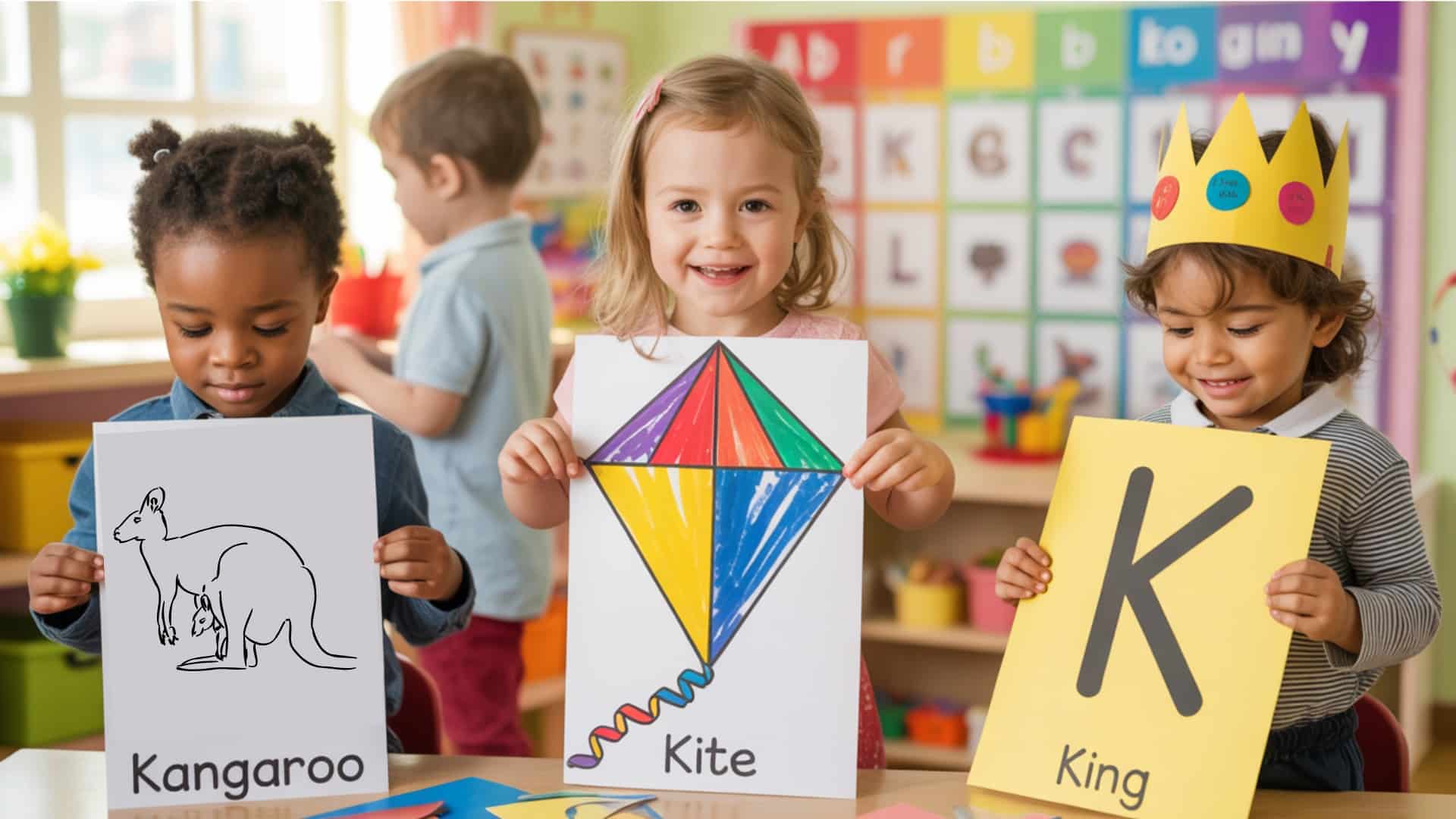
Letter K crafts for preschoolers offer much more than just fun—they’re packed with learning opportunities that help children grow and develop important skills.
- Letter Recognition: Creating the letter K through hands-on crafts helps children remember its shape much better than just seeing it on paper, making it easier to identify when reading.
- Sound-Symbol Connection: Making crafts of items that start with K (koalas, kites, kings) helps kids connect the letter with its sound; a crucial stepping stone to reading success.
- Fine Motor Development: Cutting, gluing, coloring, and placing small items during K crafts strengthens the small hand muscles needed for writing and other detailed tasks.
- Following Directions: Craft projects naturally teach children to listen carefully and complete steps in sequence, building skills that help in both school and daily life.
- Vocabulary Growth: While creating K-themed crafts, children learn new words starting with this letter, expanding their language skills in a natural, fun way.
- Creative Problem-Solving: When deciding how to decorate their kite or design their koala, kids practice making choices and finding solutions to creative challenges.
- Confidence Building: Successfully completing a craft gives children a sense of achievement and pride, boosting their self-confidence and encouraging them to try new learning activities.
These simple letter K crafts offer rich learning experiences that support early literacy skills while keeping learning fun and engaging!
To Conclude
Now you have top letter K crafts for preschoolers to try! These simple projects make learning feel like play while building important skills. From koalas to kites, each craft helps children connect the letter K to its sound in a fun way.
Keep crafting sessions short, show real examples of K items, and praise their efforts.
The mess of glue and scraps of paper is worth it when you see your little one proudly point to the letter K in a book and say “kuh” with confidence!
Which letter K craft will you try first? Your preschoolers will thank you for making letter learning so much fun!


